Resources
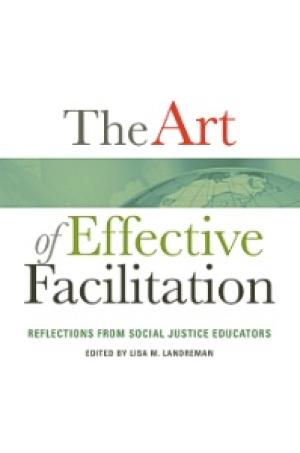
There is a whole industry of administrative agents and auxiliary student service providers inhabiting the world of higher education bordering the classroom. Whether it is in the areas of residence life, student affairs, or service learning, practitioners provide social justice education (SJE). Inside the classroom, universities and colleges engage faculty to provide discrete courses, or enable interdisciplinary multicultural experiential learning for their students under the rubric of social justice education. Indeed, as this collection testifies, even student peer instruction can be key to unlocking conversations and attaining social justice learning outcomes. The book’s multiple authors were brought together under the aegis of the ACPA-College Student Educators International Commission for Social Justice Educators. Faculty, administrators, development support staff, and students themselves contribute a variety of chapters focusing on the task of facilitation. As the title suggests, each gives a thick description of their context to flesh out the claim that facilitation is an art rather than an exact science. This is not a simple how-to manual. The book is organized into four sections: Frameworks from Theory to Practice; Understanding Identities and Facilitation; Facilitation Design and Techniques; and Supporting Student Social Action. One might ask, “Why should teachers of Theology and Religion care?” One attractive answer is that SJE aims at transformation and action in relation to social structures of dominance and oppression. There are underdeveloped suggestions in the text that dominant religious assumptions need examining on campus and in wider society. Certainly the investment of religious studies and theology disciplines in the questions of race and whiteness, gender, sexuality, and broadly, identity -- however controverted -- means that awareness of the theoretical and practical bases of campus work for students is important. To my mind, the most interesting chapters are those framed largely as dialogues between two authors. Where facilitating conversation, awareness, disclosure, negotiating triggers, and gaining empowerment is the topic, this mode of writing is immediately attractive for demonstrating what is being written discussed in a way that cannot otherwise be done. The authors are wonderfully humane in addressing their own growth in awareness of the importance of social justice education, and their faltering steps to facilitate that growth along with their students or peers. Social justice education is about relationships and fostering learning that is transformative. Not all will agree with the account of justice that is drawn on in the book: Justice as inclusive individual identity rights procedurally secured over against hegemony is the framework. Certainly different ways of living religious traditions, with their thick accounts of the good framing what counts as just, will dispute some assumptions here. Nevertheless, or rather, precisely so, they are invited into the conversation that is facilitated. Teachers of theology and religion might take much of the wisdom accrued here into their class discussions, seminars, and workshops. Further, everyday teaching will be more attuned to the strivings toward justice in the wider higher education community. I would have liked more discussion about ableism and people with disabilities. At times the thick description felt thin, given the constraints of what is communicable on a page: the experiential stories almost needed longer narration to draw in a reader who does not always inhabit the SJE discourse. What is in one sense a distraction for one jumping into the field -- numerous references to authoritative tomes unknown -- is at the same time a boon to the reader wanting to explore further: the chapter bibliographies are extensive and rich.
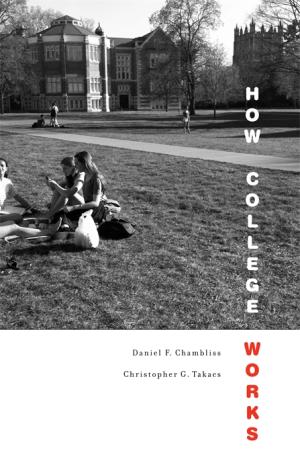
College students respond to my enthusiasm for old-fashioned dorms − long hallways, shared rooms, communal bathrooms − with the same eye-rolling disdain I once brought to my mother’s valorization of a three-mile walk to school. So when I heard that authors Chambliss and Takacs extol dorm life in How College Works, I was curious. Would they affirm other staples of college life from a bygone era? Book in hand, I discovered that the authors’ massive database, compiled by mining Hamilton College resources (including graduating student surveys, one thousand student papers collected over five years, and campus focus groups) and following a hundred Hamilton College students from their first year to ten years past graduation, supports research findings that confirm the value of several longstanding practices at liberal arts colleges. Although the authors acknowledge that Hamilton College is not representative of American higher education (it ranks fifteenth on US News & World Report’s list of national liberal arts colleges), they suggest that their exclusive focus on Hamilton has enabled them to uncover, beneath the kinds of statistical correlations that both define and constrain large-scale studies, experiences crucial to a good college education anywhere. I agree. On my reading, their findings and recommendations (evidence-based, resource neutral, and free of red tape) are relevant for schools with profiles far different than Hamilton’s. Although the authors do advocate traditional dorms because they correlate with enhanced student engagement, most of their recommendations focus on the faculty. (1)Put your best teachers in your first-year classes. First-year students tend to choose their courses based on their time and location, not their subject matter. Students follow a compelling professor into a second or third course, often becoming de facto majors before they become declared majors. Because students perceive that a professor is the discipline she teaches, students dismiss an entire field after one bad course. (2)Frontload writing-intensive classes: students experience the biggest gains during their first two years, and the weakest students gain the most. (3) Engage students outside the classroom. Graduating seniors report that dinner at a professor’s home had a profound impact. Crunching the numbers from two thousand senior surveys and controlling for GPA, major, gender, race, and so forth, the authors were startled to discover that students who were a guest in a professor’s home even once have an 11 percent higher college satisfaction score than students who were never a guest. (4) Don’t equate college success only with assessable skills. Yes, alumni do comment on the difference that their writing, speaking, and critical thinking skills make in the workplace. But alumni who are highly satisfied with their college experience also report “confidence” and “relationships” as key outcomes. Alumni repeatedly attest to a sense of efficacy they attribute to four years of taking on and successfully meeting challenges, and they strongly affirm not only friendships forged in college but also their membership in a community that, over four years, shaped their identities and their values. Evidence, not nostalgia, supports the authors’ case that three factors − skills, confidence, and relationships − comprise an index of satisfaction that shows how college works, now as in the past.
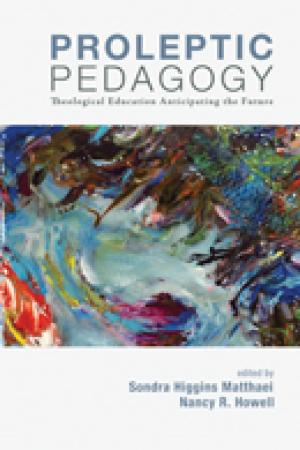
Proleptic Pedagogy: Theological Education Anticipating the Future is the capstone project of a three-year study undertaken by faculty members at Saint Paul School of Theology. In the volume’s first essay, co-editor Nancy R. Howell explains that this study was designed to investigate three “distinct pedagogical challenges” that the Saint Paul faculty has come to recognize within the rapidly changing landscape of its own institution: (1) teaching in ways that adequately address the needs of both digital natives and digital immigrants, as well as distance learners; (2) creating instructional approaches that are flexible enough to accommodate students with diverse learning styles and backgrounds; and (3) attending in new ways to the changing racial and ethnic demographics among theological students. While these particular emphases are clearly shaped by Saint Paul’s particular context, the authors of the essays argue convincingly that they also represent broader emerging themes within theological education. Proleptic Pedagogy includes eight chapters. The first of these, “Proleptic Pedagogy, Transition, and Teaching Toward the Future” by Nancy R. Howell, serves as the introduction to the volume and describes the origins of this project and the major pedagogical challenges it aims to address. Though brief, the introduction provides a helpful guide to the central themes that the other contributors address in varying degrees of depth. The remaining chapters focus primarily on one of the three main challenges named in the introduction: Chapters 4, 6, and 8 emphasize the challenge of racial and ethnic diversity; Chapter 2 addresses the challenge of educating students with diverse learning styles and needs; and Chapter 5 engages the challenge of discerning the proper place of technology within theological education. Chapters 3 and 7 simultaneously address diversity in race and ethnicity and learning styles, and how these two dimensions may influence one another in the classroom. Although the essays vary in their particular emphases, they all employ the same organizational structure and include the following sections: (1) Telling a Classroom Story; (2) Identifying the Pedagogical Challenges; (3) Engaging Pedagogical Literature; (4) Considering a Theology of Pedagogy; and (5) Constructing a Pedagogical Proposal. This structure exemplifies a practical theological approach: it begins in the lived experience of teachers in the classroom, engages pedagogical and theological resources, and finally returns to concrete implications for practice. The essays prove particularly helpful in summarizing a wide variety of pedagogical literature (which many theological educators may not have time to explore on their own) and providing examples of theological reflection on teaching. The unique strength of this volume lies in its modeling of constructive theological and pedagogical dialogue between faculty members from one institution, without necessarily suggesting that they are in full agreement. As Howell notes in the introduction, “The essays demonstrate that the faculty interprets the Saint Paul mission, theological education, theology, and pedagogy in diverse ways. Not to be interpreted as inconsistency, our diverse pedagogical approaches are our strength” (7). Taken together, the essays identify challenges to which faculty in many different contexts can relate, while grounding reflection on those challenges in the authors’ lived experience of teaching in a theological school. Additionally, the volume’s index makes it easy to identify which essays address particular topics and themes. The lack of a concluding chapter, however, makes for a rather abrupt ending to an otherwise well-integrated and compelling volume. It would have been helpful to include a brief chapter at the end of the book to reiterate the essays’ primary emphases and to propose avenues for future conversation. Nonetheless, Proleptic Pedagogy represents an important contribution to the broader conversation about the relationship between pedagogical practice and the future of theological education.
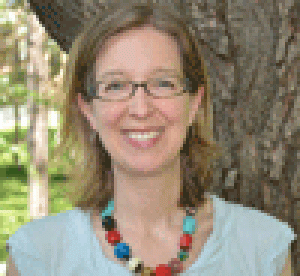
Kate Blanchard It's late January in Michigan and I'm in a certain mood. So here for your mid-winter schadenfreude are eight (click-baity) things I hate right now, in no particular order. Perhaps many of you can relate. Teaching requires me to dress like a grown-up. While I have male friends...

S. Brent Rodriguez Visiting Associate Professor of Religious Studies Hamilton College Plate In the final seconds of their struggle, Ferguson, Missouri police officer Darren Wilson shot and killed Michael Brown because of a visual impression. From Wilson's point of view, Brown appeared to him like Hulk Hogan, and like a demon. His only conceivable response, he stated, was to shoot. Six bullets penetrated Brown's body, killing him quickly. Demons do not appear to sane people with any frequency. Some people believe that demons exist, but few will admit they have ever seen one live, face to face. So, how would Wilson know what a demon looked like? What transposed...
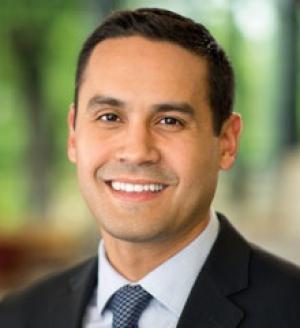
Eric D. Barreto Alright, not a strange land. It’s just Berkeley. Let me back up. I am currently about halfway through a teaching gig at Pacific School of Religion thanks to the intrepid work of the Hispanic Summer Program. For two weeks, I am helping a group of students find...
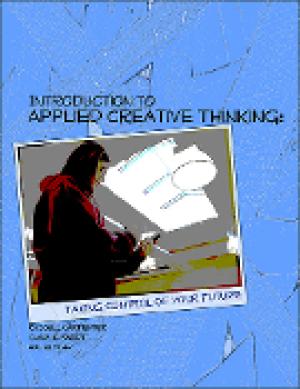
Creativity and pedagogical competency are paradigmatic phrases in the ever-changing arena of academics. With the advent of online learning and degree-completion programs, traditional academic institutions have found themselves scrambling to meet the educational needs of diverse populations. For in-seat programs, the most fundamental yet also foundational change has occurred in how faculty view themselves in the classroom. A host of questions arise as faculty wrestle with their own teaching identity. Are we lecturers? Are we project facilitators? Do we allow the students to guide the curriculum? How do we promote academic competency while also honoring cultural diversity? As the designers of the Applied Creative Thinking program and Noel Studio at Eastern Kentucky University, the authors of this volume see their work not as the evolution of a new theory, such as social learning theory or distributed cognition, as much as the genesis of “an emerging creative literacy” (viii). They firmly believe that we have the ability to be creative established within us, and that we “get better applying creativity the more practice [we] have doing it” (xi). Therefore, this book is built on an argument that “creativity is a set of learnable skills” (xi). Designed as the student manual for a course in creative thinking, this volume can be divided into three major sections: theory, strategies, and implementation. The first section consists of the first five chapters. In it the authors define four major perspectives of creativity − process, person, press, and product − and introduce the concept of recursiveness. This opening section provides the foundation for the subsequent chapters in which the authors address additional issues related to creative thinking, such as whether creativity can be taught and some common myths regarding creativity. The next major section (chapters 6 to 14) describes various strategies for developing creativity (such as piggybacking, collaborating, and using metaphors). The final section (chapters 15 to 21) discusses how to develop a creative environment, including chapters on developing a creative strategy and creative uses of media and technology. The volume is composed more like a workbook than a textbook, and each chapter includes a concept list, creative exercises, and a bibliography for further reading. One might expect this volume to be written for faculty interested in becoming more creative in their teaching discipline or who are interested in integrating creative thinking strategies into their curriculum or course design. It took reading only the first lines to realize that this volume is, in fact, oriented toward students who are either involved in a course focusing on creative writing or contemporary leadership strategies (or are simply interested in becoming more creatively competent). Once I recognized that the volume was student rather than professor focused, I found it to be quite helpful for reflecting on how creativity is a process that must be engineered by the student, and how to implement the strategic parameters of creative thinking as a professor. As an instructor interested in developing my creative competency, I was elated to discover that the authors, along with Shawn Apostel, published a companion volume for instructors in February 2013, titled Teaching Applied Creative Thinking: A New Pedagogy for the 21st Century.
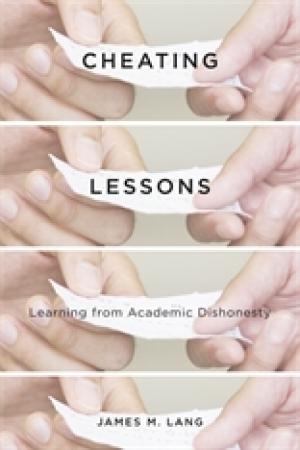
I did not want to read this book. Having perused a number of books on the subject in recent years, I was suffering from plagiarism fatigue. However, when the head of our center for teaching lent me Cheating Lessons, promising me that it contained new insights and would be good airport reading during an upcoming trip, I acquiesced. I soon discovered that Cheating Lessons is aptly named. Author James Lang draws on case studies, but not primarily to teach his readers about why students plagiarize or commit other academic ethics infractions. Rather, Lang invites his readers to treat each case as a distinct lesson in how students learn. Focusing on contextual rather than dispositional factors linked to cheating and drawing on a body of empirical research, Lang explores powerful pedagogies that come into view in the wake of learning failures to which his case studies attest. Scrutinizing the Olympics of Ancient Greece, civil service tests in China’s dynastic history, and Atlanta’s No Child Left Behind testing scandal, among other examples, Lang establishes that high-stakes testing settings as well as those that focus on performance rather than process offer students only an extrinsic motivation to learn. Most significantly, these environments are highly conducive to cheating. Juxtaposed with these cases are chapters that describe cheating-resistant learning environments. Lang draws his examples from interviews, observations, and teaching materials shared with him by award-winning college and university teachers. These teachers serve as our guides for exploring contexts that promote learning through mastery rather than performance, feature low-stakes assessment, activate students’ intrinsic motivation to learn, and support learners’ self-efficacy. Lang excels at extracting from his data examples and vignettes that draw readers into the classrooms of these teacher guides. There we observe how they promote student engagement by forging links between course questions and questions that students bring to the course. Particularly insightful are Lang’s suggestions for addressing a problem that may especially beset those of us who teach required subjects: when confronted with students’ indifference to a question or topic that captivates us, what learning strategies can we employ that will elicit from students a strong desire to grasp hold of the learning challenges we pose to them? Teachers highlighted by Lang offer creative and inspiring examples of assessment practices that bolster students’ intrinsic motivation to learn and enhance their self-efficacy (for example, a literature course in which students work with literary classics and then teach them to residents of a juvenile correctional center). Lang’s account of powerful pedagogical practices, rich with possibilities for enhancing learning in the religious studies classroom, makes Cheating Lessons a valuable resource. However, the book may not be the best choice for airport reading. Engrossed in Cheating Lessons at O’Hare, I was quite startled to be on the receiving end of wisecracks from strangers who supposed from the title that its advice focuses on the bedroom rather than the classroom.
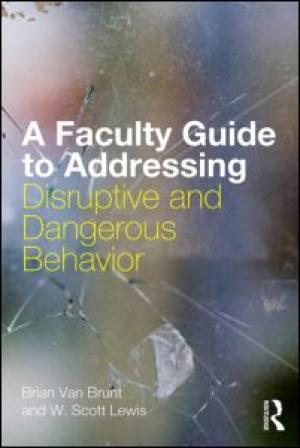
At some point in one’s teaching career, perhaps every teacher is confronted by disruptive behavior from a student that interferes with the processes of teaching and learning. Many faculty are challenged daily by common disruptive behaviors ranging from using social media during class to acts of physical and psychological aggression. On occasion, faculty find themselves afraid of a student, yet rarely do teachers receive training for these situations. Many assume a “do-it-yourself” mentality, believing it to be one’s sole responsibility to handle what happens within the classroom. At most, faculty may discuss it with departmental colleagues, but often fail to report disruptive student behaviors to appropriate university officials. It is precisely this approach that Brunt and Lewis discourage in A Faculty Guide to Addressing Disruptive and Dangerous Behavior. They encourage faculty at community colleges, technical schools, and four-year colleges and universities to expand their categories of what constitutes disruptive and potentially dangerous student behavior, to manage such behavior with both sensitivity and firmness, and to learn when and how to make use of institutional resources for dealing with student conduct problems. The book is immensely practical, drawing upon the authors’ expertise as a university counseling center director and a higher education risk management professional. The issues and techniques discussed in each chapter are illuminated by case studies contributed by faculty and administrators from a wide array of institutions. Each chapter also includes discussion questions that could guide important faculty dialogue around these issues. In part one, Brunt and Lewis operationalize dangerous and disruptive behaviors, teaching faculty how to identify signs of potentially dangerous behaviors and to conduct threat assessments. The authors challenge professors’ tendencies to dismiss, ignore, or take an overly punitive approach to disruptive behavior. Yet they also recognize that contextual factors shape whether a situation is viewed as a crisis and what strategies will be effective. They introduce terms and university resources that ought to be familiar to all faculty, but probably are not. How many teachers know whether their institution has a Behavioral Intervention Team, Risk Assessment Team, Student Conduct Office, or equivalent? More importantly, do faculty know when and how to contact them? Part two focuses on student populations who present a particular challenge. This is the least informative section of the book, as the material on each population is sparse, usually two pages or less. Further, the authors’ approach is confusing. In some cases they identify nontraditional student populations with physical and mental health problems, generational characteristics, or life circumstances that may impede their academic progress and thus predispose them to acting out in frustration: military veterans, international students, millennial and older students, and distance learning students. In other cases, however, they problematize groups whom they describe as likely to be victims of discrimination: African Americans and GLBTQ students. For example, their explanation of the micro-aggressions that African Americans may experience on campuses is commendable, but they regrettably frame the problem as being occasioned by the presence of African American students rather than by the cultural myopia of White students. In part three, Brunt and Lewis advise faculty not to “reinvent the wheel” but rather to take advantage of campus resources for assisting students. They begin with a helpful description of FERPA, HIPAA, and Title IX regulations, clearly outlining the limits of and exemptions to privacy laws that faculty often perceive as obstacles to discussing student issues with colleagues. They then discuss the various resources available to faculty and how to make use of them. In part four, they review ten “core concepts,” that is, characteristics and skills that will assist faculty in managing their classrooms, reducing the likelihood of dangerous and disruptive behavior, and handling it effectively when it occurs. I highly recommend this book for postsecondary faculty. This is a book that needs to be read, but also needs to be discussed with colleagues. Many faculty will find similarities between the scenarios described in the case studies and issues confronted in their teaching experience. As a licensed psychologist, I have usually felt confident in my capacity to address most student issues, but reading this text helped me to recognize occasions when I may have missed clear student distress signals. It has prompted me to investigate the resources available on my own campus.
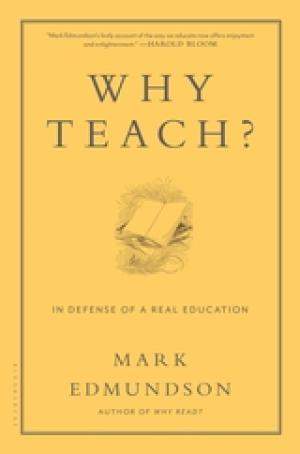
The “final vocabulary” is the network of meanings that our students bring into the classroom − that are true to them, and our job is to open that vocabulary to change. “All good teaching entails some kidnapping,” Edmundson writes; “there is a touch of malice involved . . . As well as some sorrow.” Mark Edmundson makes this remark in thinking about the teacher who introduced him to the intellectual life, Doug Meyers. Meyers sounds like most of us who love to teach: “strange, uncool,” “offbeat,” willing to be a little silly to make a point, and “counterintuitive” (181), as well as passionate about what we love, and, yes, a bit self-centered. Yet, Meyers’s gift as a teacher was to enter a high school classroom − in the same way that Wittgenstein entered elementary school classrooms − and, in his philosophy class, to probe, to adjust, to meet the students where they were, and to provoke. In Why Teach? Edmundson is well aware of what professors face in the “corporate city.” My university has never hosted monster trucks, as the University of Virginia did, but, like all colleges and universities, in its quest for the best students, highest awards, and so on, it is consumer driven. Sounding like Augustine of Hippo, Edmundson urges all of us − for this book is as much about being a student as being a teacher or being a student/teacher − to move within the corporate city to find the scholarly enclave, where one will be challenged. He asks us to stop thinking of teaching as “training and entertaining” (188). Edmundson is aware that teaching and learning is not the heart for most in the corporate city, but he urges us to make it so. Part of this is slowing students (and professors) down, turning students from their hyper fast-paced, technology-centered lives, powered by coffee, energy drinks, and endless choice − their desires always to be elsewhere (36) − towards something deeper. For Edmundson, whose father, a working-class man who had not had a college education and who urged Edmundson to follow his passions, education is to resist being the “intersections of many evaluative and potentially determining discourses” (59) and to seek to imagine and to interrogate whom we might become (63). This process − and Edmundson stresses process, with its necessary failures − is powered by finding our key interlocutors. For Edmundson, Freud (whose interlocutor is the Greek tragedians but, mostly, Shakespeare), Emerson, Plato, and others provide this role: “The best reason to read them is to see if they know you better than you know yourself. You may find your own suppressed and rejected thoughts following back to you with an ‘alienated majesty’” (61). As teachers, we should urge students − and ourselves − to face the challenges of those who do not agree with us and reason our ways through their power. We will find life thickened in this “soul making” (xiii) activity. Two things about this book are important for all teachers to know. First, our students are not dumb; they are overwhelmed by the desire for success: theirs, their parents’, and society’s emphasis on material wealth. Second, they are 9/11 babies, who live by carpe diem: avoiding closure, wanting endless choice (in terms of education: long drop-add periods, pass-fail options, and the ability to drop a class as late as possible with the “innocuous W” but also double and triple majors, with a minor or two thrown in), and always wanting to know everything and to be elsewhere. And, faced with this daunting configuration, they, ironically, avoid challenge. Edmundson begins his book with every professor’s worst day: the teaching evaluation day. He thinks about how these little exercises in “consumer expertise” (4), and good evaluations, unfortunately, often reflect how well we met the criteria of enjoyment (entertainment) and interest (consumption). This makes educational institutions like “northern outposts of Club Med” (26). To feed, therefore, the illusion of busyness and excellence, we may issue no challenges − in short, we may pander. To really try to educate this generation (and, I would add, to avoid the censure of their parents), to urge them to read, to which I will return, “to be influenced, to learn something new, to be thrown off . . . course and onto another, better way” (63) is risky. Edmundson demonstrates how he was thrown off and challenged by Meyers and by his experience of his own interlocutors. Homer, whom he uses to think about football and Lawrence Taylor, Plato, Emerson, William James, Malcolm X (whose book stressed Malcolm’s love for learning, oddly, was the book for a white, Irish Catholic working-class kid from Boston), William Blake, who had to deal with the corporate city in his own way because of his patron, and football, Ludacris, and Biggie Smalls all led Edmundson to and let him interrogate the life he lives. His endless curiosity reminds me of something Historian of Religions Charles H. Long once told me, that the intellectual is interested in everything. Edmundson urges us away from excellence, from always measuring and being in hierarchy, which our success-driven students have experienced in elementary and high school, to eloquence. If every subject, every major, is a language, and a student is adopting one, or more, of these languages as her own, she will “want to know how to speak it expertly” but also know its limitations: “how it fails to deal with those concerns for which it has no adequate words.” He continues, “You’ll be looking into the reach of every metaphor that every discipline offers, and you’ll be trying to see around their corners” (65). Edmundson shows us that teaching and learning and research and living are not separate. He makes a powerful case for a holistic and very human vision of the liberal arts: The quest at the center of a liberal arts education is not a luxury quest; it’s a necessity quest. If you do not undertake it, you risk leading a life of desperation − maybe quiet; maybe in time, very loud − and I am not exaggerating. For you risk trying to be someone other than who you are, which in the long run is killing. (59) What do the arguments of a professor of literature and theory have to do with those of us who teach religion? Edmundson cites Matthew Arnold’s recognition that underscores my area of Arts, Literature, and Religion: that if religion wanes, literature will be the site that holds meaning. But Edmundson knows that religion has not waned. He recognizes − comparing and contrasting the task of the University of Virginia, to develop the head, with the task of Jerry Falwell’s Liberty University, to develop the heart − that students do not divorce those. They are deeply concerned with the meaning of their lives; therefore, we cannot leave the heart (198) to Jerry Falwell. Students may put their experiences in a facile, non-interrogated way as “spirituality,” but, more often, they have deep commitments for which someone else has articulated the meaning. Edmundson recognizes that it is in religion that we most often encounter students’ “final vocabularies.” Edmundson reminds us that students bring these narratives into the classroom. They are “where our principles lie”; they are “the core” of being, and “the point beyond which mere analysis cannot go” (192). So, how do we go beyond them? We start with the head: reason and critical thinking. What religious studies and literature have in common, he suggests, is the love of books, of words. Both “attempt to teach one essential power, and they often do so with marked success”: reading (194). Through teaching students to read with care, we bring those “final vocabularies,” which really are only “for now” (193), into contact with other “final vocabularies,” not as a test or to create new hierarchies, but to generate critical reflection − to ignite what I call the moral imagination. Our aim in teaching students to read is not conversion. It is to move students to encounter with the “other”: to “encounter between the transcendental and the worldly” (198). Edmundson writes, “The objective is to help the students place their ultimate narratives in the foreground and render them susceptible to influence” (198). To get students to interrogate those held truths, Edmundson asks us to move beyond mere interpretation to meaning, asking the Platonic question: “Is it true?” (195). He is not asking us to deal in ultimate truths − the sense that we hold those is what encounter unsettles − but to teach so that our students interrogate the “live options” of a text − or for us, of another’s religious way of life (195). This sort of teaching does not replace religion, but teaches one to recognize that “a most pressing spiritual and intellectual task of the moment is to create a dialogue between religious and secular approaches to life” (197). Students may leave “with their religious convictions deepened,” but they are more “thoughtful believers than when they began” (197-198). We begin, therefore, in “secular dialogue” and move to what Edmondson calls “impersonation” or advocacy (201-202) for the text, in which we, the teachers, “offer an inspiring version of what is most vital in the author,” tempting our students into making the “past available to the uses of the present” (202). This lets us deal with the heart and spirit, not doing our students the “injustice” of leaving that to the Jerry Falwells of the world. I must say here that Edmundson does not dismiss what is new. He does not dismiss theory; he just asks readers to be wary of supplying “a standing set of terms to every text” (203). Theory, he suggests, reminds us of the power of books to persuade; that is why it is so careful of them. And he does not dismiss diversity and multiculturalism. He worries that we breaks boundaries too fast, “asking students to know others before they know themselves” (208) and supplying our students with just enough knowledge to be exploitative of the “other” in the global marketplace (208). Edmundson insists that the intellectual quest offers to our students the joy and passion we felt when we started out as students. This passion, he argues, is about the freedom of self-making in democracy, in articulating the self amid and in relation to the multiplicity of ways of being that we experience in the world. Using a metaphor familiar to those of us who teach religion, Edmundson speaks of maps. He argues that books can map or transform lives and that our students are in need of maps that both locate and challenge “their existing sense of the territory” (205), and that, with our carefully adversarial and joyful guidance, lead them into “self-aware self-revision” (207). I very much admire the courage and spirit of this book. Edmundson does not throw anything away: he, himself, is learning digital techniques for his classroom even as he insists on the “old-timey” practice of close reading. I hope that I have not made this book sound like a curmudgeonly defense of the “old days.” It is not. It is a beautifully written and often funny but careful reflection on what we gain by holding fast to and what we lose by abandoning the basics of a liberal arts education: reading, writing, fluency, and ongoing engagement in self- and world-reflection. There is an ongoing bass note that sounds through the book: Can you live it? That reminded me of a student in one of my religion and literature classes who told the class one day that he was trying to live out the ethos of each author as we read: “That D. H. Lawrence week,” he moaned, “was hell.” We all laughed, but learned something: that the trangressive, always-in-tension D. H. Lawrence, did not articulate as whole a vision of the good life as he thought he did. That student conquered what Edmundson calls “knowingness”: the sense that we know everything − or can find it on the web − and that we are in charge (181). He shows us a powerful way, one that continually reminds us of our useable past, to crack that tendency in ourselves and in our students. He speaks with the integrity of one willing to risk his own ultimate map all the time. This is a man, after all, who found one key interlocutor and intellectual companion in Malcolm X. Patricia O’Connell Killen always asks professors in workshops and colloquies two questions: “What is your passion?” and “When did you know you had asked a good question?” Killen’s second question points to what Edmundson is asking of us: not to dwell in certainty but to surrender to the joy of doubt and curiosity and to read, read, read. That path, perhaps, will lead us (back) to the answer for Killen’s second question, to our passions.